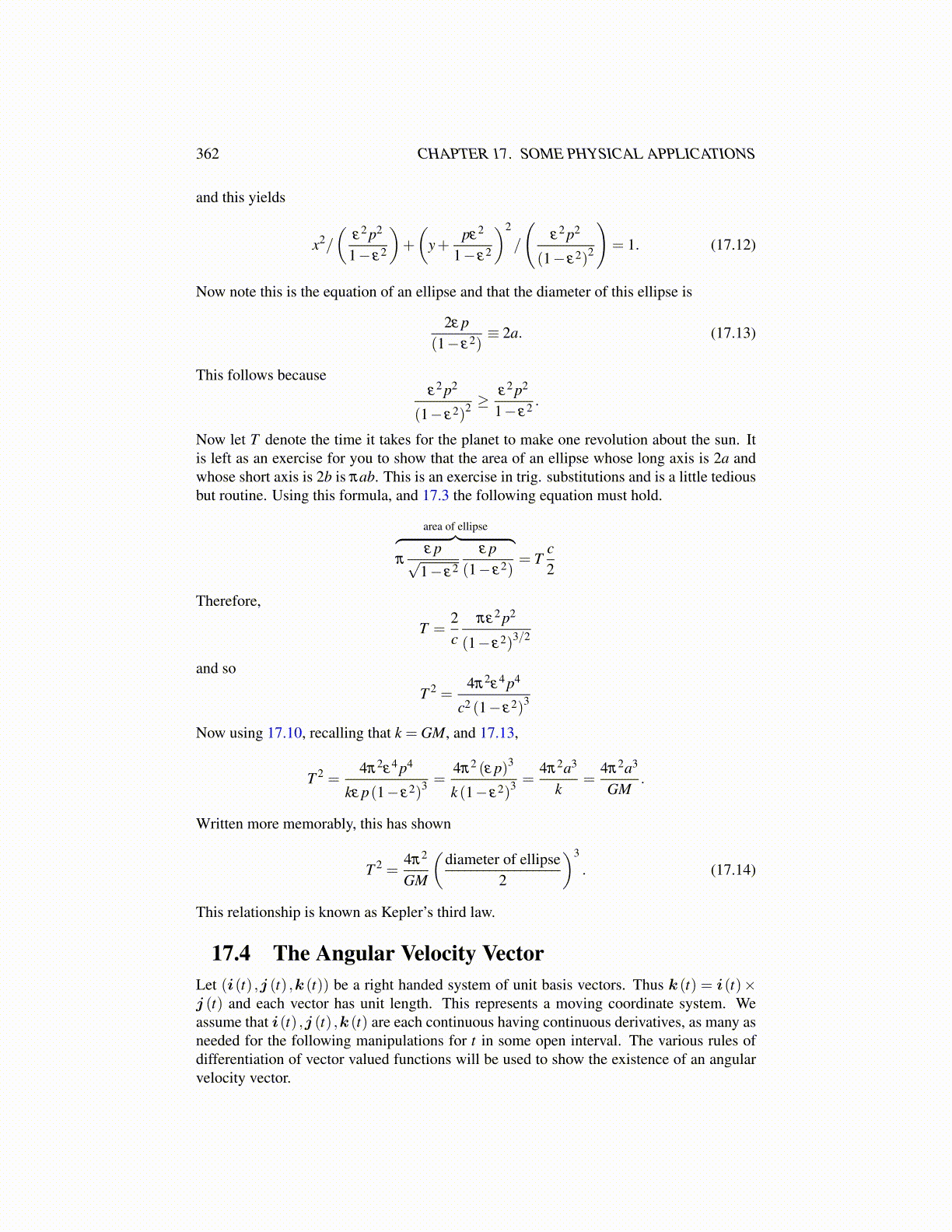
362 CHAPTER 17. SOME PHYSICAL APPLICATIONS
It only remains to verify that this vector works. Recall Lemma 17.4.1 which will beused without comment in what follows. Does the above Ω(t) work?
Ω(t)× i(t) =(i′ (t) ·k (t)
)k (t)
+(i′ (t) ·j (t)
)j (t)+
=0︷ ︸︸ ︷i′ (t) · i(t)
i(t) = i′ (t)
Ω(t)×j (t) =(j ′ (t) ·k (t)
)k (t)+
(i′ (t) ·j (t)
)(−i(t))
=(j ′ (t) ·k (t)
)k (t)+
(i(t) ·j ′ (t)
)i(t) = j ′ (t)
and finally,
Ω(t)×k (t) =(j ′ (t) ·k (t)
)(−j (t))−
(i′ (t) ·k (t)
)i(t)
=(j (t) ·k′ (t)
)(j (t))+
(i(t) ·k′ (t)
)i(t) = k′ (t)
Thus, this Ω(t) is the angular velocity vector and there is only one. Of course it might havedifferent descriptions but there can only be one and it is the vector just described.
This implies the following simple corollary.
Corollary 17.4.3 Let u(t) be a vector such that its components with respect to thebasis vectors i(t) ,j (t) ,k (t) are constant. Then u′ (t) =Ω(t)×u(t).
Proof: Say u(t) = uii(t)+u jj (t)+ukk (t) . Then
u′ (t) = uii′ (t)+u jj
′ (t)+ukk′ (t)
= uiΩ(t)× i(t)+u jΩ(t)×j (t)+ukΩ(t)×k (t)
=Ω(t)× (uii(t)+u jj (t)+ukk (t)) =Ω(t)×u(t)
17.5 Angular Velocity Vector on EarthSo how do you find the angular velocity vector? One way is to use the formula shownabove. However, in important cases, this angular velocity vector can be determined fromsimple geometric reasoning. An obvious example concerns motion on the surface of theearth. Imagine you have a coordinate system fixed with the earth. Then it is actuallyrotating through space because the earth is turning. However, to an observer on the surfaceof the earth, these vectors are not moving and this observer wants to understand motion interms of these apparently fixed vectors. This is a very interesting problem which can beunderstood relative to what was just discussed.
Of course the earth moves through space, but this is ignored because the accelerationsrelative to this motion are so small. After all, it takes a year to go around the sun.
Imagine a point on the surface of the earth which is not moving relative to the earth.Now consider unit vectors, one pointing South, one pointing East and one pointing directlyaway from the center of the earth.